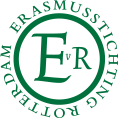Poet
Troubadour poetry

Troubadour poetry
(Portugal, 0)
Biography
While the poetry of the Provençal troubadours has been widely translated and justly appreciated, many readers are scarcely if at all aware of the trovador tradition on the Iberian Peninsula. Some 1680 cantigas (songs), written in Galician-Portuguese between the 12th and 14th centuries, have survived in a handful of cancioneiros (song books), the most important of which were discovered in the 18th and 19th centuries. The language of the cantigas reflects the vernacular spoken north and south of the Minho River, which divides Galicia from Portugal, and, for reasons that are still obscure, was the preferred idiom of lyric poets in every Peninsular region except Catalonia.
The original cantigas, of whatever variety, bore no titles. Purists are asked to kindly overlook the titles given by the translator to the English versions presented here, but they should remember, as every one of the invented titles urges, that the cantigas were songs.
Presented here are the works of 11 individual poets:
ROI FERNANDEZ was a clergyman from Santiago de Compostela. One of his cantigas suggests that he accompanied Fernando III’s army when it captured Seville from the Moors.
PAI GOMEZ CHARINHO (1225?-1295), a Galician noble from Pontevedra, served the kings Alfonso X and Sancho IV. He was Admiral over the Castilian navy, and the verses of his 28 cantigas often refer to the ocean. He was knifed to death by a close relative, apparently for political reasons.
AIRAS NUNEZ was a cleric, perhaps from Santiago de Compostela, who served in the Castilian court of Sancho IV from 1284-1289. His poems were strongly influenced by Provençal poetry, and though limited in number (15 survive), they touched a wide variety of themes. He almost certainly collaborated with Alfonso X on the Cantigas de Santa Maria and may actually have composed the larger part of them.
PERO MEOGO was a Galician, active in the 13th century. All nine of his cantigas d’amigo are graced by the presence of a mountain stag, which most critics understand as a symbol of male sexuality.
MARTIN CODAX may have been a Galician jongleur, active in the second half of the 13th century. His seven cantigas d’amigo seem to be related, telling the story of a girl’s first love. Six of them are of particular interest for being almost the only cantigas whose musical notation has come down to us.
DINIS served as king of Portugal from 1279 until his death in 1325. A great patron of national culture, he founded his country’s first university in 1290 – transferred from Lisbon to Coimbra in 1308 – and was himself one of the most prolific and talented poets of the Galician-Portuguese school. No less than 137 of his cantigas have been preserved in the Songbooks.
JOAM GARCIA DE GUILHADE was a low-ranking noble who made a living as a troubadour, apparently employing jongleurs to propagate his songs. Active in the mid-13th century, the heyday of the Galician-Portuguese school, Joam de Guilhade was one of its most prolific and inventive poets, with 54 surviving cantigas that employ a number of original images and large doses of irony.
AFONSO EANES DO COTON was a Galician noble who apparently fell on hard times, taking refuge in various Spanish courts and specializing in satiric, often pornographic songs.
PERO GOMEZ BARROSO was the bastard son of a Portuguese noble and a squire’s daughter, but he managed to do better than his legitimate half brothers. He fought in the conquest of Seville from the Moors (1248) and served as Alfonso X’s intermediary to pacify rebellious nobles in Granada (1273).
ALFONSO X, KING OF CASTILE AND LEÓN (1221-1284) produced a vast body of historical and scientific prose in Spanish but wrote his poetry in Galician-Portuguese. Besides his contributions to the profane troubadour tradition, Alfonso X “the Learned” compiled the Cantigas de Santa Maria, a collection of 427 songs – many written by him – in praise of the Virgin Mary.
PERO DA PONTE authored at least 53 cantigas, many of which refer to the events of his time, as in several songs dealing with the defeat of the Moors in Valencia (1238) and Seville (1248).
© Richard Zenith
Poems{id="4677" title="SONG AGAINST THE SEA"}
{id="4675" title="SONG ABOUT THE PAIN OF LOVE AND SEA"}
{id="4687" title="SONG OF LOVE IN THE SUMMER"}
{id="4669" title="SONG ABOUT A GIRL AT A SPRING"}
{id="4679" title="SONG FOR A BELOVED IN VIGO (II)"}
{id="4681" title="SONG FOR A BELOVED IN VIGO (III)"}
{id="4689" title="SONG OF THE FLOWER OF THE GREEN PINE"}
{id="4683" title="SONG OF A WRONGED TROUBADOUR"}
{id="4691" title="SONG TO AN UNEXPLODING WOMAN"}
{id="4673" title="SONG ABOUT A WORSENING WORLD"}
{id="4685" title="SONG OF DISCOMFORT"}
{id="4671" title="SONG ABOUT A RICH MAN UP FOR AUCTION"}
Also on PIW
{id="4621" title="An Unsung Literature"}
A comprehensive essay on the history of the genre by Richard Zenith.
Poems
SONG OF DISCOMFORT
SONG FOR A BELOVED IN VIGO (II)
SONG TO AN UNEXPLODING WOMAN
SONG ABOUT A GIRL AT A SPRING
SONG FOR A BELOVED IN VIGO (III)
SONG ABOUT A RICH MAN UP FOR AUCTION
SONG OF A WRONGED TROUBADOUR
SONG ABOUT A WORSENING WORLD
SONG OF THE FLOWER OF THE GREEN PINE
SONG OF LOVE IN THE SUMMER
Poems
Poems of Troubadour poetry
Sponsors
























